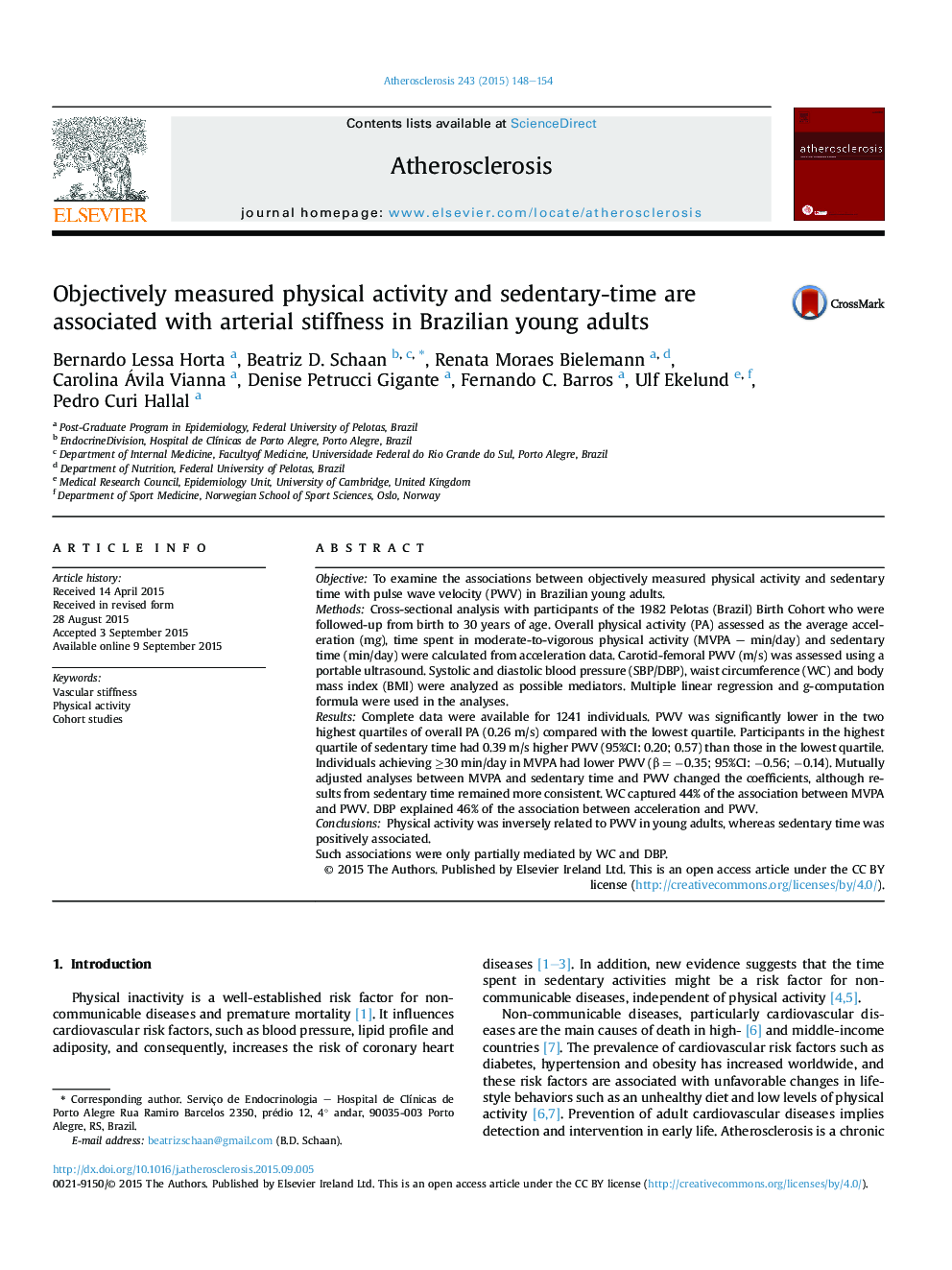| Article ID | Journal | Published Year | Pages | File Type |
|---|---|---|---|---|
| 5944211 | Atherosclerosis | 2015 | 7 Pages |
ObjectiveTo examine the associations between objectively measured physical activity and sedentary time with pulse wave velocity (PWV) in Brazilian young adults.MethodsCross-sectional analysis with participants of the 1982 Pelotas (Brazil) Birth Cohort who were followed-up from birth to 30 years of age. Overall physical activity (PA) assessed as the average acceleration (mg), time spent in moderate-to-vigorous physical activity (MVPA - min/day) and sedentary time (min/day) were calculated from acceleration data. Carotid-femoral PWV (m/s) was assessed using a portable ultrasound. Systolic and diastolic blood pressure (SBP/DBP), waist circumference (WC) and body mass index (BMI) were analyzed as possible mediators. Multiple linear regression and g-computation formula were used in the analyses.ResultsComplete data were available for 1241 individuals. PWV was significantly lower in the two highest quartiles of overall PA (0.26 m/s) compared with the lowest quartile. Participants in the highest quartile of sedentary time had 0.39 m/s higher PWV (95%CI: 0.20; 0.57) than those in the lowest quartile. Individuals achieving â¥30 min/day in MVPA had lower PWV (β = â0.35; 95%CI: â0.56; â0.14). Mutually adjusted analyses between MVPA and sedentary time and PWV changed the coefficients, although results from sedentary time remained more consistent. WC captured 44% of the association between MVPA and PWV. DBP explained 46% of the association between acceleration and PWV.ConclusionsPhysical activity was inversely related to PWV in young adults, whereas sedentary time was positively associated.Such associations were only partially mediated by WC and DBP.
